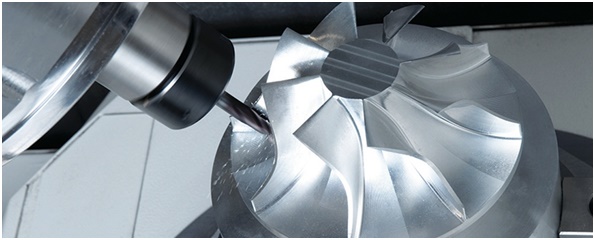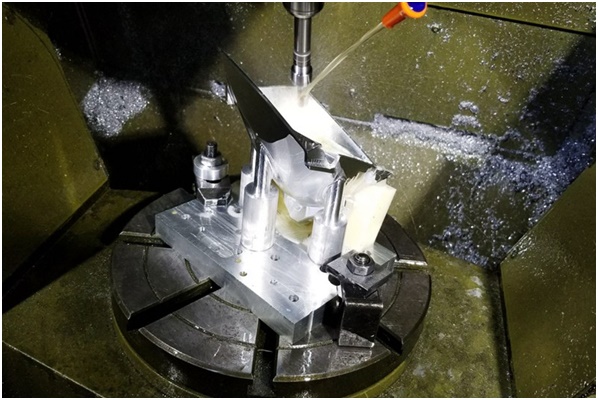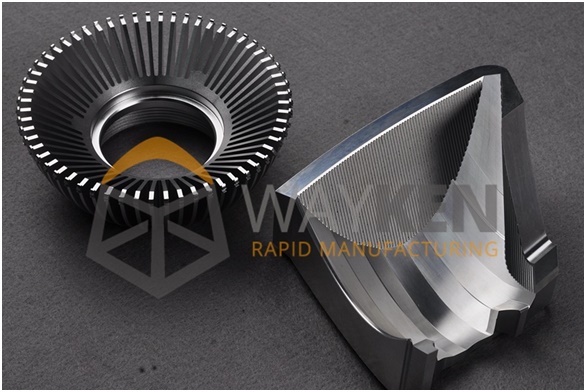Milling is a comparatively easy yet an effective technique of carrying out the CNC process. For anyone out there who is not quite familiar with milling and machining of different metals assumes that taking a sharp cutting tool, rotating it at maximum speed and moving it around the work piece will make it cut like a butter.

As compared with steel, CNC aluminium requires much lesser cutting force, therefore, the cutting tool for milling aluminium requires lesser forces and mechanical loading. For the purpose of this post, aluminium and its alloys are referred collectively as aluminium. Aluminium has high thermal conductivity, therefore, the heat generated during the milling process gets dispersed away more rapidly along with the chipped off metal. It reduces the thermal loading over the cutting tool. This, therefore, characterises the milling of aluminium via cutting tools at high speeds and feeds.
The material characteristic of aluminium results in the formation of BUE (built-up edge) when being machined by the rapid cutting tool. This residue formation results in a huge mechanical load over the cutting tool adversely affecting the efficiency of milling aluminium. The BUE build up also results in the balance of the cutting tool to be offset resulting in the poor feed to the tool.

Milling of Aluminium is also highly dependent on the type of cutting tool being selected. If the cutting tool’s flute (gullet) is not long enough, the chipped off aluminium may clog the cutting tool rendering the cutting efficiency of the tool inefficient. In order to overcome this, the CNC operator must carefully select the cutting tool which may have fewer teeth or by running the cutting tool at a slower speed.
In terms of machinability, aluminium is not a uniform material. It may vary in shape and size which makes its machining slightly more complicated. The alloying material in the aluminium (in particular Silicon), the cutting tool material as well as the treatment method during the milling process, all affect on how the output of the milling will be.
Once milling aluminium, other factors such as the geometry of the shape required and the work holding condition all adds to the complications of CNC Aluminium. Delivery of the optimum coolant supply is also a crucial factor. Without the right coolant, the excessive heat buildup due to the friction between the work piece and the cutting tool can result in the deterioration of the tool bit as well as the loss of smoothness in the CNC process.
The Correct Combination of the Material, Geometry and Treatment
Manufacturing of the tools for the CNC Aluminium all require special consideration, both by the manufacturers and the operator. In order to attain the best possible results for the products, it is important that the there is a balance kept between the selection of the cutting geometry, the material of the tool as well as the tool treatment which includes the supply of proper coolant and fine-tuning the cutting tool and the machine.

For the prototype manufacturing or manufacturing of industrial grade parts, milling holds an important role. Being a subtractive manufacturing technique, milling removes around 70-75% of the material for the aluminium block. Any slight error in this process, can result in delays and can be a financial burden especially if the project is time and budget constraint. Therefore, high precision, upper hand experience and selection of proper tools are important. Though to an untrained eye, milling may appear to be a simple and easy process, but in reality, a lot of different aspects and decisions are taken in order to turn your ideas from a mere block of aluminium into a reality.
Useful Tips
1. Don’t be in a hurry
One of the easiest yet the most effective tip that you can make use of is that don’t be in a hurry once milling aluminium. Milling is a job of patience and extreme precision and accuracy. Therefore, it is important that once milling your part, you are not in a hurry. This doesn’t mean slowing down your feed or the speed of your cutting tool, it means that once making the all-important decisions such as choosing the type of cutting tool, its cutting speed and the coolant supply, no decision should be rushed while proper time and management skills should be applied.
2. Make use of CNC Router Bits
CNC routers have a wide array of cutters and tooling bits to choose from. With so much to choose form and if no proper guidance is given, the operator might become overwhelmed while choosing the correct tooling material. You have to choose the correct cutter that is designed specifically for the cutting of the aluminium. In order to CNC aluminium rapidly and effectively, 2-3 flute carbide end mills are used worldwide and highly recommended. These cutters are reputable to offer good machinability and longevity. The HSS cutters, as well as the Cobalt cutters, do not offer the same premium cut as opposed to the carbide cutter.
By having your cutter right, you can operate your CNC router at higher RPMs and can also increase the feed speed. The right cutter for the right material also means that your cutters will last longer and there are no unexpected delays that may upset the client.

3. Smaller diameter cutters are better than the thick ones
By having the cutters of smaller radius, you can ramp up your cutting speed dramatically. Having a cutter radius of ¼” or smaller is ideal. Since the smaller diameter cutters make deflect under load, that is the main reason to favour carbide cutter over others as carbide is more rigid as opposed to other cutter materials.
4. Clear your chips regularly
Clearing off your chips is an extremely important aspect of milling especially if the material has an affinity to bond with the cutter. As mentioned earlier, chip build-up causes the cutting efficiency of the tool to degrade as well as the cutting the workpiece with poor precision. This also results in excessive heat buildup on the tool.
